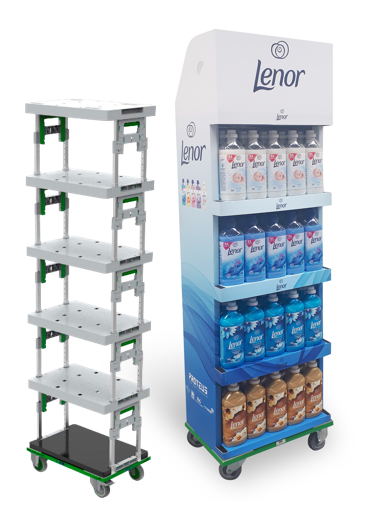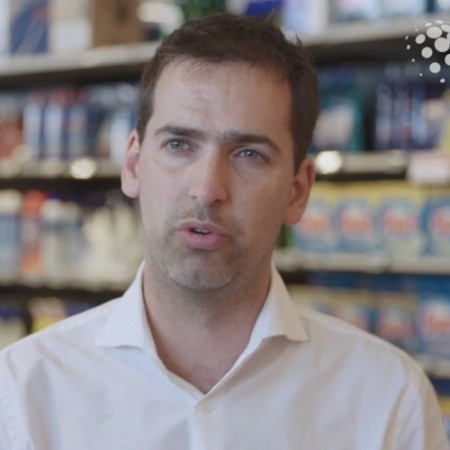Ahead of The Consumer Goods Forum’s Sustainable Retail Summit this month, Wouter Schaekers, P&G Director of Product Supply & Sustainability, and Reinhard Wesp, P&G Director of Physical Distribution and Customization (DACH), give their insight into two aspects of sustainable supply chain innovation that are changing the game.
Advocating for reusable instead of disposable for the transport of goods: the isomodular GS1 transport box
Before products such as toothbrushes, razors and deodorants reach the retail shelves, they are repackaged several times in different transport containers on their way to the consumer. In production, the products come in their outer packaging in cartons, are stacked on pallets and transported by truck to the distribution centers. Depending on the order, the pallets may be divided into smaller units and repacked into other containers. In this way, the products pass through various containers and packaging until they are finally at the retailer and later on the shelf. Today, transport boxes are already being used for redistribution in retail, but these are not currently standardized. The GS1 has recognized this and so industry, trade and GS1 Germany have developed the reusable GS1 SMARTBox, an isomodular, exchangeable box that represents a sustainable solution for all parties involved. The GS1 SMARTBox offers many advantages: the exchange and cleaning of the boxes is done by a pool partner, industry and trade share the costs, the trucks are optimally loaded and utilized, trade saves time and work and unnecessary packaging material is reduced. A small box – many sustainability advantages!
Incorporating sustainable point of sale materials into marketing plans

This blog was written and contributed by:
Wouter Schaekers
Director of Product Supply & Sustainability
P&G
and
Reinhard Wesp
Director of Physical Distribution and Customization (DACH)
P&G



